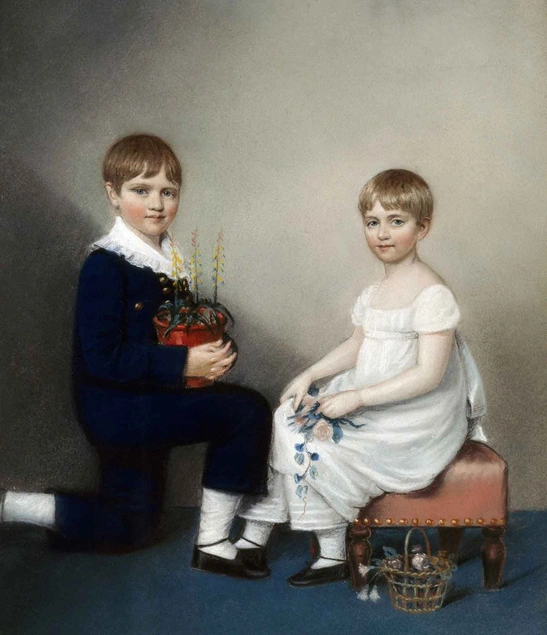Darwin’s Garden: An Evolutionary Adventure
Exhibition explored the botanical influences on Charles Darwin’s groundbreaking work
Although Charles Darwin (1809–1882) is well known for his theory of evolution, few people are aware of his insightful work with plants and the key role botany played in formulating his ideas. That untold story was the focus of “Darwin’s Garden: An Evolutionary Adventure.” The exhibition explored how the famed naturalist’s botanical research not only contributed to his scientific understanding of plants, but ultimately shaped his ideas about the origins of life in general.
The exhibition came to The Huntington from the New York Botanical Garden, where it was organized by Darwin expert David Kohn, professor emeritus of science and society at Drew University. “Kohn amply illustrates that Darwin’s early work in botany was the basis for his theories of evolution,” says David Zeidberg, the Avery Director of the Library. “Darwin’s seminal work, Origin of Species, focuses on animals, but it was his study of plants that laid the foundation for the great work.”
The exhibition featured more than 60 items, including rare books, manuscripts, and prints from the New York Botanical Garden’s collection and loans from private individuals and institutions such as the Cambridge Herbarium, Cambridge University Library, Down House (Darwin’s home in Kent), the archives and library of the Gray Herbarium of Harvard University, and the Lindley Library of the Royal Horticultural Society. The Huntington displayed its own copies of selected items, including The Botanic Garden (1791) by Darwin’s grandfather, Erasmus Darwin; Robert Hooke’s Micrographia (1665), which features drawings of the first microscopic views of plant cells; and James Bateman’s The Orchidaceae of Mexico and Guatemala (1837–43), a large-format book containing 40 color plates of orchids.
Darwin’s work with plants—particularly orchids— provided credible and enduring evidence in support of his theory of evolution through natural selection. He discovered, for instance, that the key to orchid pollination was the touch of an insect’s proboscis, which releases spring-loaded pollen. From this breakthrough Darwin structured a convincing argument for adaptation by natural selection. He contended that plants, no less than animals, are sensitive creatures in possession of behaviors that permit them to respond to their environment, including elements such as sunlight, touch, and gravity. Plants track the movement of the sun, capture and digest insects, and respond to the “touch from a child’s hair.” Darwin delighted in discovering these adaptations.
As an undergraduate at Christ’s College, Cambridge, Darwin collected specimens for his botany professor’s herbarium and began to crossbreed plants. In 1831, while still a young man, he traveled to South America aboard the HMS Beagle as the naturalist for a surveying expedition. He wrote in his journal that his mind was “a chaos of delight” as he reveled in the luxuriance of tropical forests. He spent much of his time collecting plants, along with fossil bones and bird skins. Darwin’s collection of “all plants in flower” from the Galápagos Islands became the basis for the first flora of that archipelago and provided his strongest evidence for evolution. Says Zeidberg, “This early study of plant variation would become another principle of Origin of Species and one of the underlying concepts of the notion of survival of the fittest.”
A catalog of the exhibition, written by guest curator David Kohn, is available in the Huntington Bookstore & More.



